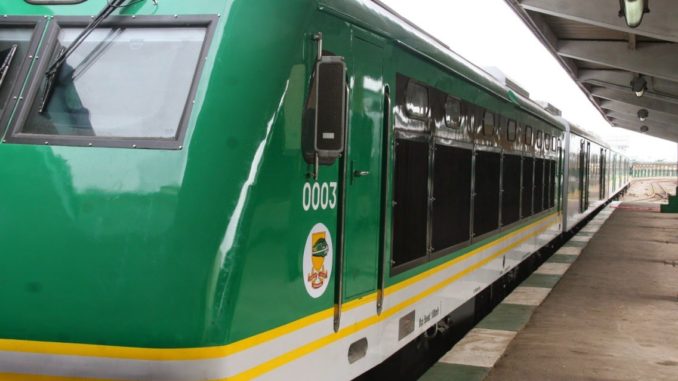
AS the Megacity Lagos expands, people are moving to the outskirts. One of such areas is the adjoining Ifo Local Government Area in Ogun State but how do you get there?
From Oshodi, there is the expressway route that leads to Ijaiye; from Ijaiye, it is a bus ride to Agbado. The problem is that of many vehicles plying the expressway to Sango Ota. The result is a lot of delay, hence the need to resort to the adjoining roads that lead to Agbado. The rub here is that these roads are of poor quality. One has to pray not to fall out of the buses as they transverse the various undulating roads.
Getting to Agbado crossing terminal, from where you can board the vehicles plying the Agbado-Opeilu, Balogun, Itoki, Pipeline, Abule route, you are in for another trip on a long and winding road.
Partly Macadamised, partly filled with stones, sand, gravels and silt, this road provides an avenue, for Soukous (Zaire) Katakiti, katakoto, Tamuzezemu (Victor Uwaifo), Ikwokirikwo (Anambra), the suave swange (Tiv) and the energetic exorcism of Igbe (Urhobo) dance practice.
Borrowing from Ali Mazrui’s “Triple Heritage”, only a drunk can drive straight on this road. As if the situation was not bad enough, the state government decided to expand the road and in the process, added a list of demolished structures and an uncompleted Agbado crossing bridge to an already bad situation.
Comes in the train. From Ilodo to Ijoko through Yaba, Oshodi and Itoki, the fare is N230 as compared with the road fare from Oshodi which is a minimum twice that amount. Even if the old wagons have the screeching sounds that come from broken down shock absorbers, it provides a faster route. There is also the “Jonathan” train with air-conditioning coaches that make less noise at the cost of N700.
On a fateful morning, one of us was returning from Itoki to Yaba when the train made its whistle stop at Agege. Then, all hell broke loose; missiles like stones and sticks started flying. The train and its passengers were under attack. There was a solidified army of Hausa boys and Yoruba touts armed with cudgels, knives and matchetes, beating and hacking away at those unfortunate enough to be standing at the four-entry and exit doorways of each coach. Of course, there were no doors, but because these coaches were overflowing with human traffic, it was those at the doorways that were beaten with cudgels, stabbed with knives and cut with machetes. Blood was freely flowing. Before my very eyes, a victim’s arm was almost severed from the body.
Since they could not get into the body of the coaches as a result of congestion, sticks and stones come flying through the windows which had no panes. Those of us in the middle had to crouch and hope for the best, clutching our bags which some used as helmets to ward off new injuries.
What was the hullaballoo all about? Apparently, those who used to sit on top of the train from Ijoko had, the previous morning, rained bottles down on the people at the Agege train stop. Hence, the revenge mission.
Two questions stand out. One, did the train driver have to stop at Agege train stop, considering the fact that the 4.00pm train from Iddo (Lagos) had been subjected to a rehearsal skirmish when it stopped at Agege the previous day? It could have by-passed Agege to prevent the hellish situation. Prevention is better than cure, they say.
Two, where was the railway police? Even with its reduced manpower, it could have liaised with the Nigeria Police Patrol Team situated along the train route at Iju crossing or shared intelligence reports with the larger police presence in Ikeja. This would have nipped the revenge mission in the bud.
As if the travails of the people commuting from Lagos to the Agbado (Ifo) area were not enough, the railway authorities decided to reduce the trips. Getting to Oshodi one discovered that the Iddo-Ijoko trips had been reduced to two evening trips. One for 5:30pm and the other for 8pm in the evening. The morning trips from Ijoko Iddo (Lagos) were reduced to just two, one for 7am and the other for 8pm in the morning.
The result was more overcrowding. The congestion led to more suffocating heat, even in the morning. This led to more fainting spells. Once got caught up on one such return trips from Itoki to Yaba, on the Ijoko-Iddo (Lagos) route.
When the train got to Itoki from Ijoko, there were more people than usual on the rooftop of the coaches and barely any standing space inside the coaches. Of course, sitting space was out of the question.
After a short distance, one found himself slipping to the floor of the train, in a semi-conscious state. A Good Samaritan provided a sachet of “pure water” for one to pour on one’s head. The Good Samaritan was a woman who wanted to avoid the dangers of leaving home before dawn and still got caught up in the hold-up before getting to her Ikeja office.
Why embarking on a second rail track, while increasing the nightmare of those travelling on the first rail track?
Erafoke is a journalist based in Lagos
END

Be the first to comment